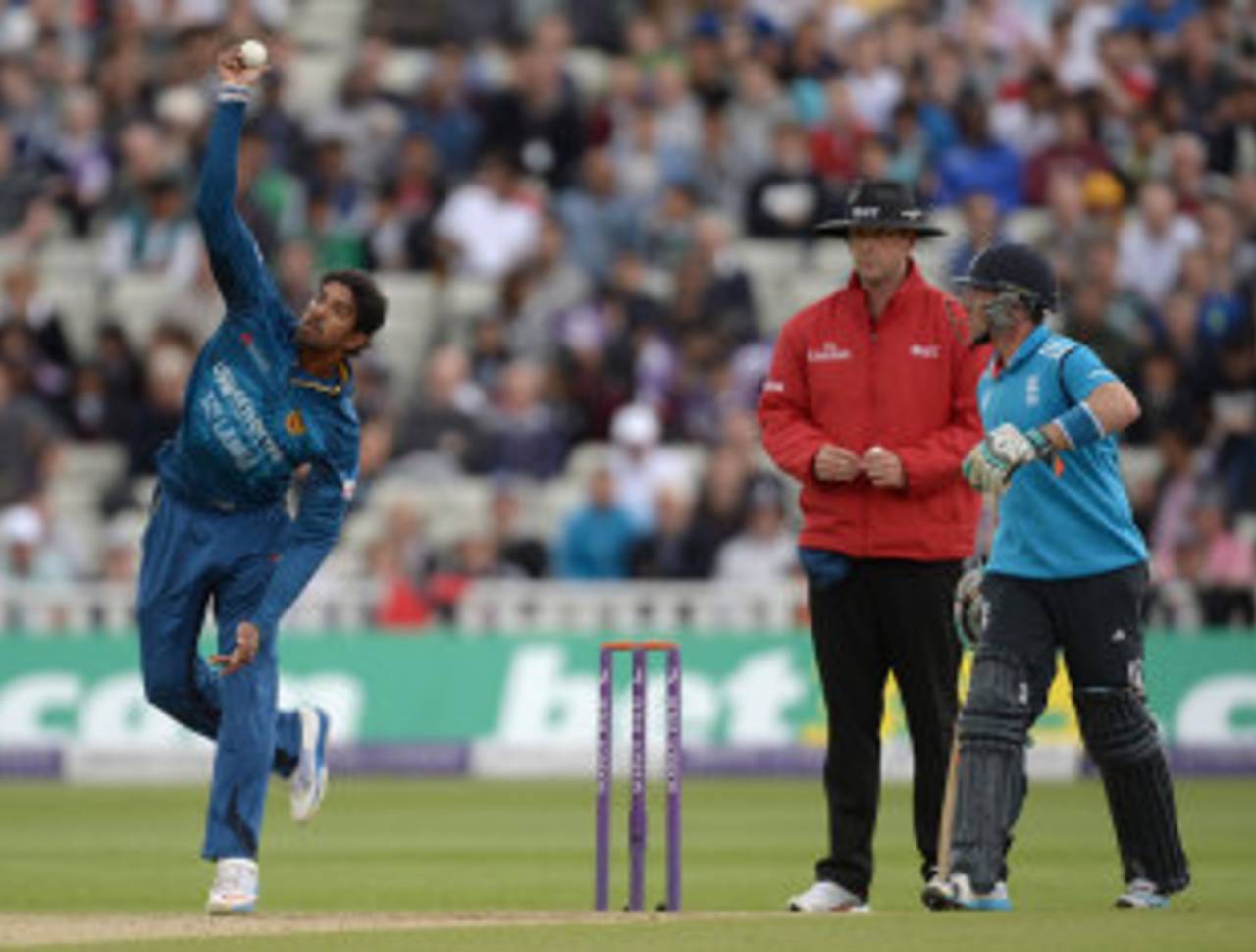The ICC's cricket committee has stated that the methods currently in use to detect illegal bowling actions are imperfect. The committee, which discussed the issue during a two-day meeting in Bangalore on June 3 and 4, said that numerous international bowlers with "suspect" actions were continuing to bowl undetected, and hence it was important that match officials get support from biomechanists to identify the illegal actions with "more confidence".
"The committee discussed the issue of illegal bowling actions, and believed that there are a number of bowlers currently employing suspect actions in international cricket, and that the ICC's reporting and testing procedures are not adequately scrutinising these bowlers," the ICC said in a release. "It recommended that changes be considered to encourage umpires and referees to identify suspect bowlers with greater confidence, to use the expertise of the biomechanists working in this area to assume a greater role during the assessment process, and to allow for ongoing scrutiny of bowlers once they have been identified under the ICC procedures."
To make the process more robust, the ICC has decided to open illegal-action testing centres in more countries. Until now, bowlers had to travel to the laboratories at the Universtiy of Western Australia in Perth to undergo testing, but the committee was informed of additional centres being accredited by the ICC.
"Members of the committee were also updated on the project to increase the number of illegal-action testing centres around the cricketing world, noting that Cardiff Metropolitan University was now accredited to conduct illegal action testing for the ICC, and that other facilities in India, Australia, England and South Africa were likely to be accredited over coming months," the release said.
Last week, during the Lord's ODI, Sri Lanka offspinner
Sachithra Senanayake was
reported by match officials for delivering with an illegal action. Sri Lanka Cricket officials were surprised by the decision, even though Senanayake had been reported while touring England with the Sri Lanka A team in 2011. At the time, Senanayake worked on his action and subsequent tests found his bowling within the prescribed limits.
Currently, bowlers whose actions are considered suspect are required to attend ICC-approved biomechanics laboratory tests to assess the amount of elbow extension (flex) in their bowling action. In November 2004, the ICC set a uniform 15-degree limit on elbow extension.
Under the existing procedure, Senanayake, who finished as the second highest wicket-taker in the series, will be scrutinised in a closed-door environment within 21 days of his being reported. During this time he is allowed to play, until the test results are declared.
In another incident, last month, Pakistan offspinner Saeed Ajmal had
sought an explanation from the ECB after England fast bowler Stuart Broad appeared to suggest Ajmal bowled with an illegal action. West Indies offspinners Shane Shillingford and Marlon Samuels, too, have been
hauled up for suspect actions more than once.
In order to help bowlers correct their flawed actions, the ICC tied up with a consortium of Australian cricket, sports science and sports engineering institutions in 2012 to develop wearable sensor technology that would allow the legality of bowlers' actions to be assessed during matches and training sessions. The ICC revealed that the technology was tested on 70 players in training sessions during the Under-19 World Cup held in UAE earlier this year.
"The results of the trials were very encouraging, with the final stage of the project expected to conclude in 2016," the ICC's release said, without elaborating on any details of the findings.
The cricket committee's recommendations will be tabled at the ICC chief executives meeting scheduled to be held before the annual conference between June 23-27 in Melbourne.
Nagraj Gollapudi is an assistant editor at ESPNcricinfo
